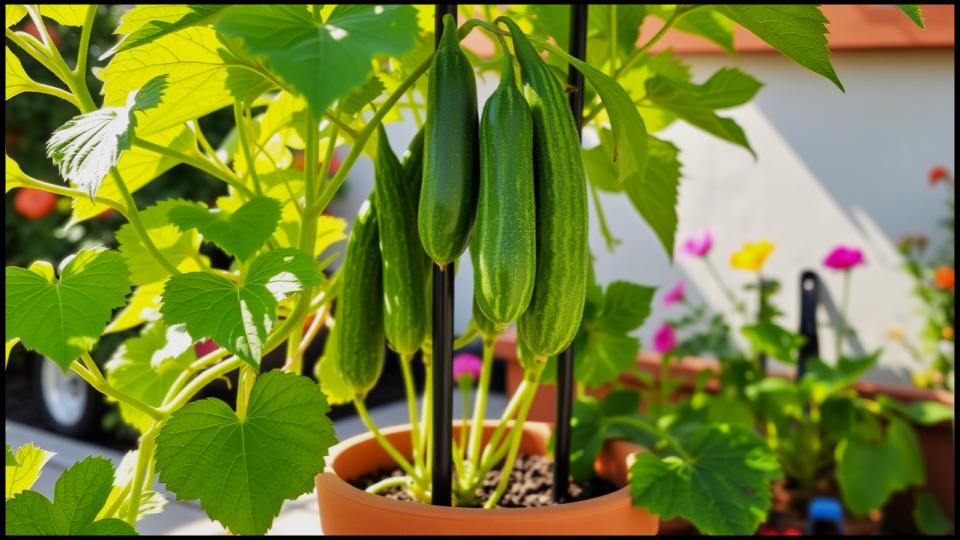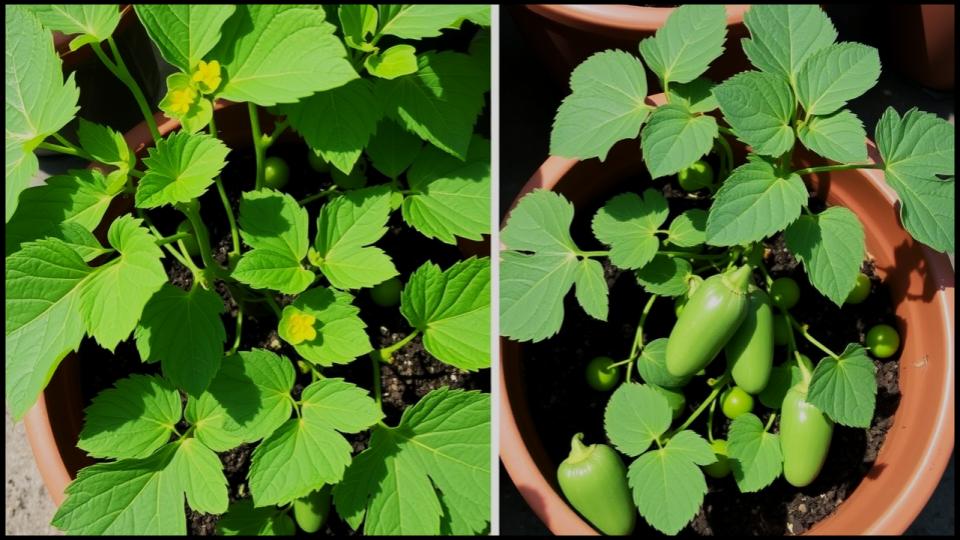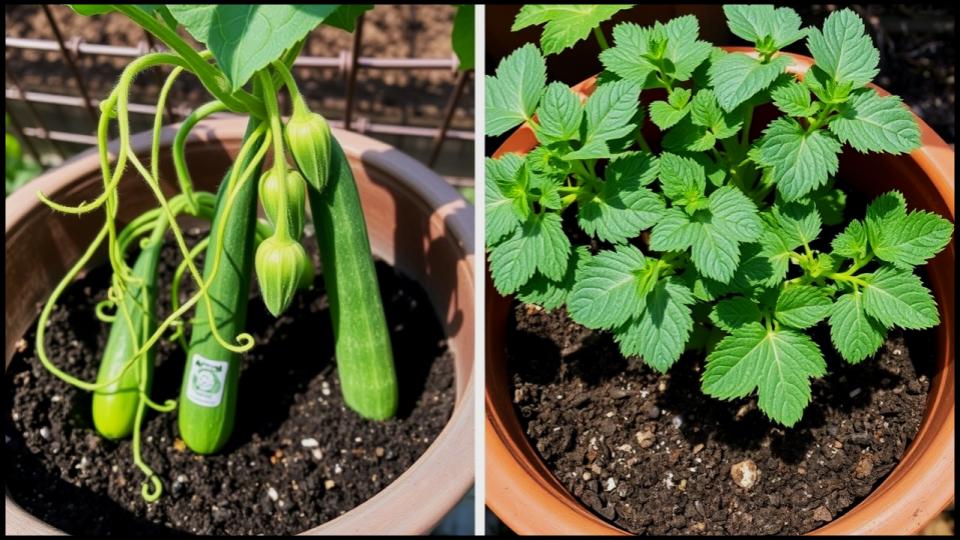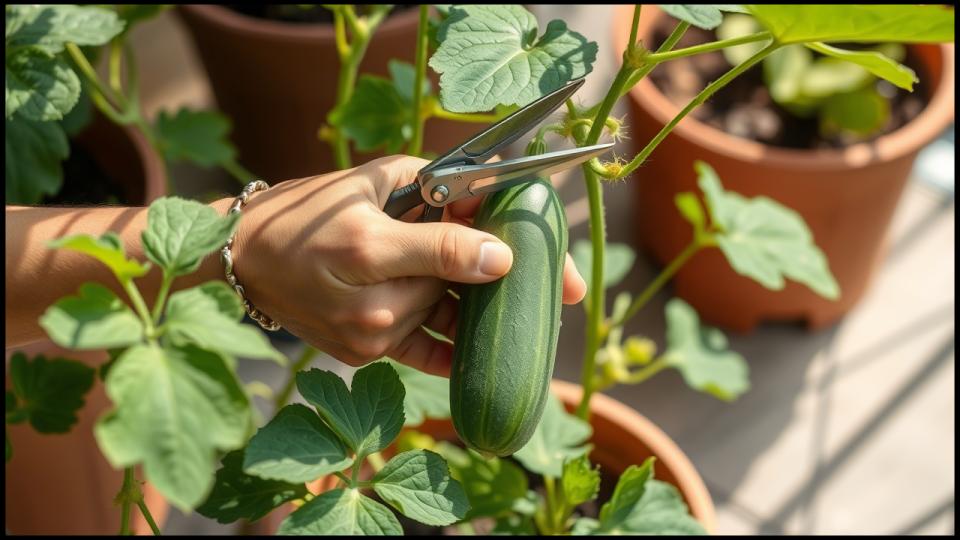
There is a particular satisfaction that comes from harvesting your own vegetables, and the taste of a homegrown cucumber—cool, crisp, and bursting with flavor—is a reward unlike any other. For those of us with limited space, the dream of a sprawling vegetable patch might seem distant. But I’m here to let you in on a secret: some of the most delicious cucumbers are grown not in the ground, but in containers. This guide is your complete resource for successfully growing crisp cucumbers in pots, turning your balcony, patio, or sunny stoop into a source of summer’s most refreshing treat.
We’ll walk through every step, from selecting the right pot and plant variety to the secrets of watering for that signature snap. Prepare to be delighted by how simple and rewarding it can be.
Quick Tips for a Perfect Patio Harvest
Short on time? Here are the essentials for success:
- Choose Bush Varieties: Opt for compact “bush” or “patio” cucumber varieties that are specifically bred for container life.
- Go Big on the Pot: A larger pot (at least 5 gallons) holds more soil and moisture, which is critical for thirsty cucumber plants.
- Water Consistently: Never let your potted cucumbers dry out completely. Inconsistent watering is the primary cause of bitter-tasting fruit.
- Feed Regularly: Container plants have limited access to nutrients. A balanced liquid fertilizer every two to three weeks is key.
- Provide Support: Even bush varieties benefit from a small trellis or cage to improve air circulation and keep fruit off the soil.
Why You Should Be Growing Crisp Cucumbers in Pots
Beyond the simple joy of it, growing cucumbers in containers offers a host of practical advantages. First and foremost is control. When you plant in a pot, you are the master of the environment. You provide the perfect soil mix, control the water supply precisely, and can move the pot to follow the sun or protect it from harsh weather. This level of control, as noted by horticulturalists, is a direct path to healthier plants and a more reliable harvest.
In my own garden, I find that potted cucumbers are far less susceptible to soil-borne diseases and pests. By using a fresh, sterile potting mix, you eliminate many of the common problems that can plague in-ground plantings. Furthermore, elevating the plant on a trellis within the pot improves air circulation around the leaves, dramatically reducing the risk of fungal issues like powdery mildew. It’s a simple, elegant solution to a gardener’s most common woes.

Choosing the Best Cucumber Varieties for Containers
The secret to a successful container garden begins with selecting the right plant. While you could try to wrangle a traditional vining cucumber, you’ll have a much easier and more productive time choosing from varieties specifically developed for small spaces.
Look for cultivars labeled as “bush,” “patio,” “compact,” or “container.” These plants have a more controlled growth habit and produce abundant fruit on shorter vines. I’ve had tremendous success with these types, and they are consistently recommended by experts at university extensions like Kansas State University.
Top Picks for Potted Cucumbers:
- Salad Bush Hybrid: An All-America Selections winner, this plant is incredibly compact yet produces full-sized, 8-inch slicing cucumbers. It’s my go-to for a reliable, no-fuss harvest.
- Spacemaster: As the name implies, this variety is perfect for tight quarters. The vines are short, but the fruit is plentiful and delicious.
- Bush Pickle: If you have dreams of making your own pickles, this is the variety for you. It produces a large yield of small, crisp cucumbers ideal for preserving.
- Diva: This is a fantastic seedless and “burpless” variety that is parthenocarpic, meaning it can set fruit without pollination—a great feature for balconies where bee activity might be limited.
The Perfect Setup: Your Pot, Soil, and Support System
Creating the ideal environment is a simple affair of three key components: the right home, the right foundation, and the right support.
Selecting the Right Container
When it comes to cucumbers, bigger is always better. These are thirsty plants with substantial root systems. A common mistake I see is gardeners using pots that are far too small, leading to plants that are constantly stressed from lack of water.
Choose a container that is at least 5 gallons in volume, though 7 to 10 gallons is even better. According to the NC State Extension Gardener Plant Toolbox, a minimum depth of 8 inches is required, but I advocate for at least 12 inches. Ensure the pot has multiple, large drainage holes. Cucumbers love moisture, but they despise sitting in waterlogged soil, which can lead to root rot.
Terracotta, fabric grow bags, or high-quality plastic pots are all excellent choices. My personal preference for a warm climate is a light-colored plastic pot, as it doesn’t heat up as intensely as dark plastic or terracotta, keeping the roots cooler.
The Ideal Soil Mix for Thirsty Cucumbers
Container plants are entirely dependent on you for their nutrition, so starting with high-quality soil is non-negotiable. Do not use soil from your garden, which is too heavy, can harbor pests, and will compact in a pot.
Instead, purchase a high-quality, all-purpose potting mix. Look for a mix that contains peat moss, compost, and perlite or vermiculite. This combination, recommended by experts at the University of Georgia Extension, provides the perfect balance: the peat and compost hold onto moisture and nutrients, while the perlite ensures excellent drainage and aeration for healthy roots.

The Importance of a Trellis for Potted Cucumbers
Even compact bush varieties benefit immensely from a support structure. A trellis for potted cucumbers serves several critical functions: it lifts the vines and leaves off the soil to improve air circulation, keeps the fruit clean, and makes harvesting a breeze. It also allows sunlight to reach all parts of the plant, leading to more even ripening and better growth.
For a single pot, a simple tomato cage works wonderfully. You can also insert three to four bamboo stakes into the pot and create a teepee shape, wrapping twine around them for the cucumber tendrils to grab. For a truly elegant look, a small, fan-shaped wooden or metal trellis inserted into the back of the pot provides sturdy and attractive support.
TOOLS AND MATERIALS BOX:
- Large Container (5-10 gallons): Ensure excellent drainage.
- Saucer or Tray: To catch water runoff.
- High-Quality Potting Mix: Do not use garden soil.
- Slow-Release Granular Fertilizer: To mix into the soil at planting.
- Water-Soluble Balanced Fertilizer: For regular feeding during the growing season.
- Cucumber Seeds or Seedling: Choose a compact, bush variety.
- Small Trellis or Tomato Cage: For essential plant support.
- Watering Can or Hose: For consistent, deep watering.]
A Step-by-Step Guide to Planting Your Cucumbers
- Prepare Your Pot: Fill your chosen container with the potting mix until it is about 2-3 inches from the rim. Mix in a balanced, slow-release granular fertilizer according to the package directions. This provides a baseline of nutrition for the plant as it gets established.
- Planting Seeds or Seedlings: You can either plant seeds directly into the pot or purchase a young seedling from a nursery. Plant 2-3 seeds in the center of the pot, about 1 inch deep. Once they have their first set of true leaves, select the strongest seedling and snip the others at the soil line. If using a transplant, gently remove it from its nursery container and place it in the pot at the same depth it was growing previously.
- Install Support: Insert your trellis or cage now, while the plant is small. Doing so later risks damaging the delicate root system.
- Water In: Water the pot thoroughly until you see water draining from the bottom holes. This settles the soil around the roots and eliminates air pockets.
- Place in the Sun: Move your newly planted cucumber to its final location, which should receive at least 6-8 hours of direct sunlight per day.
The Art of Cucumber Container Care
Once planted, your focus shifts to providing consistent care. This is where the art of container gardening truly shines.
Watering: The Secret to a Crisp, Sweet Harvest
This is the single most important aspect of cucumber container care. Inconsistent watering stresses the plant, which can lead to the production of cucurbitacin—a compound that makes the fruit taste bitter, a fact confirmed by the Oregon State University Extension.
- Check Daily: In the heat of summer, a potted cucumber may need water every single day. Check the soil by inserting your finger about two inches deep. If it feels dry, it’s time to water.
- Water Deeply: When you do water, do so thoroughly. Pour water slowly and evenly over the soil surface until it runs freely from the drainage holes. This ensures the entire root ball is saturated.
- Water the Soil, Not the Leaves: To prevent fungal diseases, apply water directly to the soil and avoid wetting the foliage. A watering can with a long spout is perfect for this.
Feeding Your Potted Cucumbers
Because frequent watering leaches nutrients from the pot, you’ll need to feed your cucumbers regularly. After the plant begins to produce flowers, start feeding it every 2-3 weeks with a balanced, water-soluble fertilizer, such as a 10-10-10 or 20-20-20 formula. Follow the product instructions for the correct dilution. I find that using a half-strength solution every 10-14 days provides a very steady supply of nutrients for vigorous growth.
Sunlight and Temperature
Cucumbers are true sunworshippers. They require a minimum of 6-8 hours of direct sunlight each day to produce fruit. If your plant is getting leggy (long, thin stems with few leaves), it’s a sure sign it needs lighter. They thrive in warm weather, with ideal temperatures between 75°F and 85°F (24°C to 29°C), as detailed by the University of Georgia Extension.
Troubleshooting Common Cucumber Conundrums
- Yellowing Leaves: This is often a sign of overwatering or a nitrogen deficiency. Check your watering habits first. If the soil is constantly soggy, allow it to dry out slightly between waterings. If watering seems correct, it’s time to feed your plant.
- No Fruit Forming: The first flowers to appear are male and will naturally drop off. Female flowers, which have a tiny, immature cucumber at their base, appear shortly after. If female flowers aren’t developing into fruit, it may be due to a lack of pollination. You can play the role of the bee by gently transferring pollen from a male flower to a female flower with a small paintbrush.
- Bitter Cucumbers: As mentioned, this is almost always due to heat or water stress. Maintain consistent watering and consider providing some afternoon shade if temperatures are consistently above 90°F (32°C).
Harvesting for Peak Flavor and Crispness
The rewarding moment has arrived! Knowing when to harvest is key to getting the best flavor. Don’t wait for cucumbers to become massive; they are at their peak when they are firm, uniformly green, and have reached the size typical for their variety.
For slicing cucumbers, this is generally 6-8 inches long. For pickling types, 3-5 inches is ideal. According to the University of Georgia Cooperative Extension, leaving a cucumber on the vine too long will not only result in bitter-tasting, seedy fruit but also signal to the plant to stop producing.
Use a sharp knife or pruning shears to cut the stem about a quarter-inch above the fruit. Pulling the cucumber can damage the vine. Harvest frequently—every day or two during peak season—to encourage the plant to produce more.

A Taste of Summer, Right on Your Patio
There you have it—everything you need to cultivate a thriving cucumber plant in a simple pot. The process is a delightful journey, from the first sprout to the final, crisp harvest. By providing a generous container, rich soil, consistent water, and a little support, you are setting the stage for a summer filled with the freshest salads, sandwiches, and snacks imaginable.
Now you’re ready to transform that sunny spot on your deck or balcony into a productive and beautiful culinary oasis. Embrace the simplicity and elegance of container gardening, and prepare to be amazed by the delicious results.
